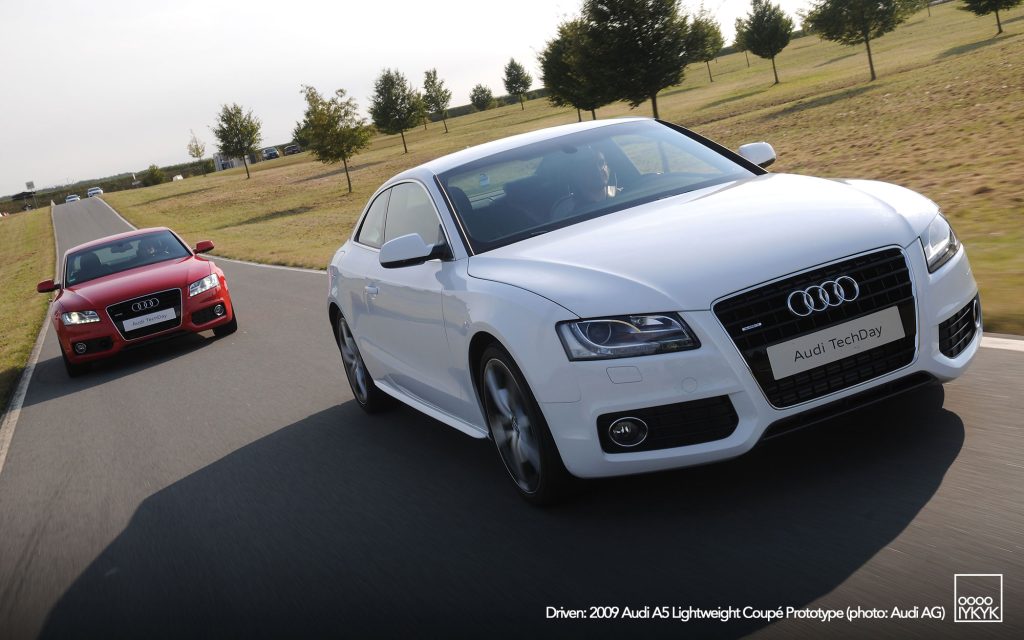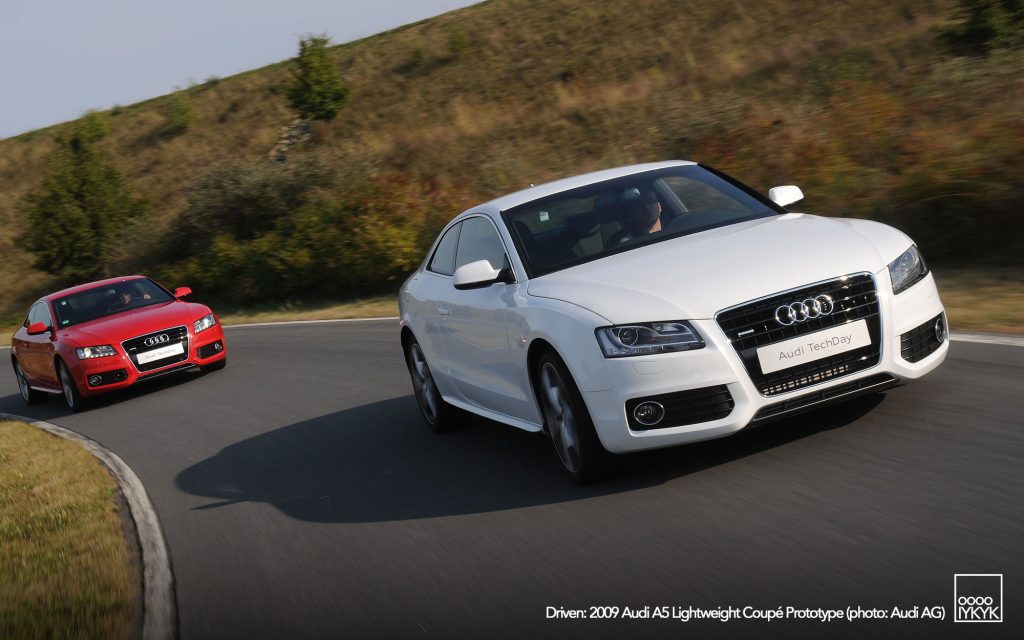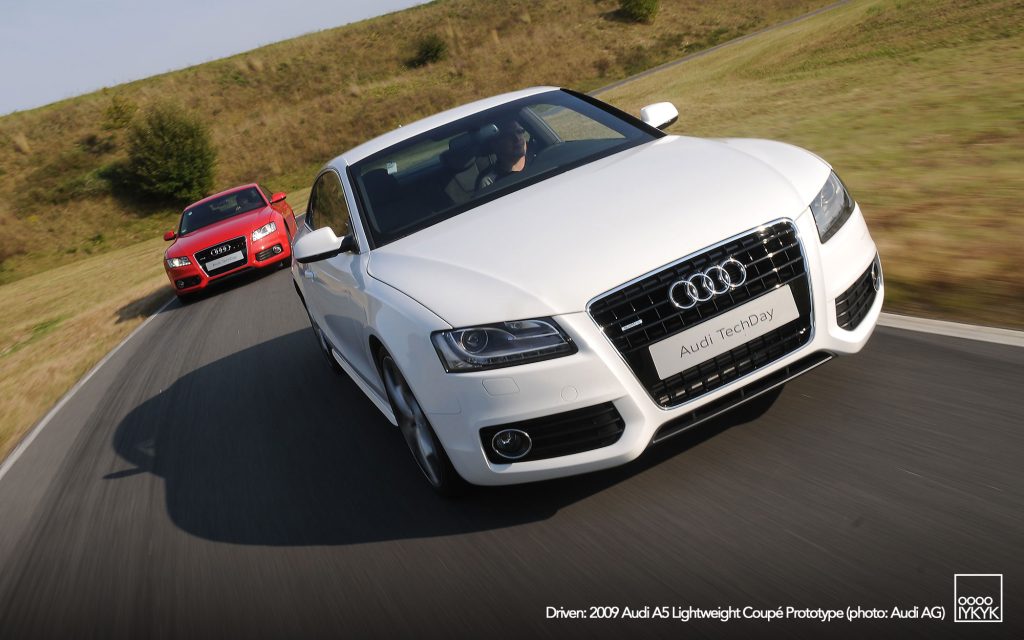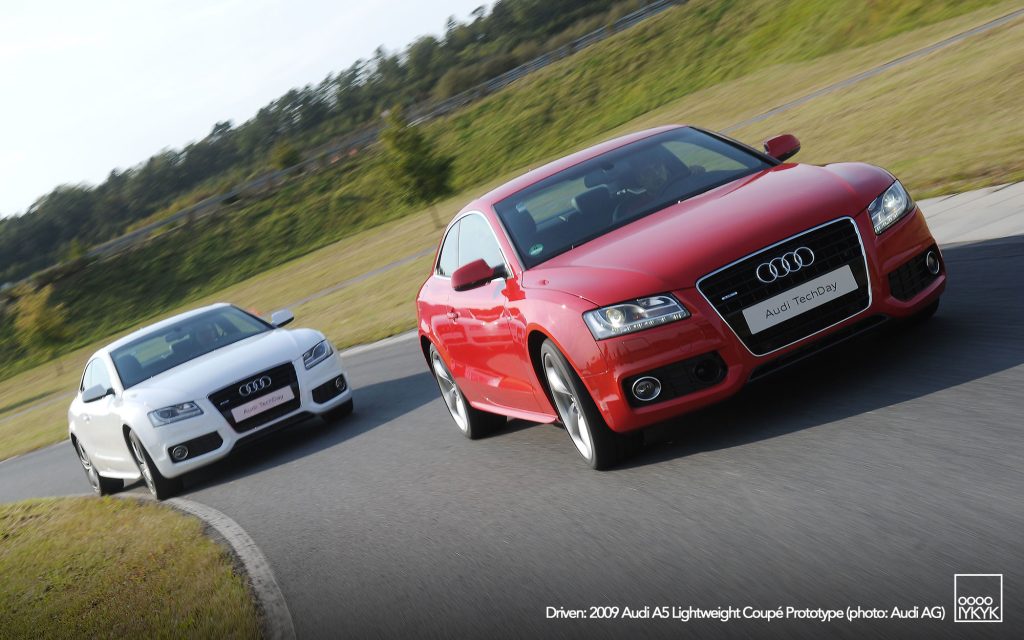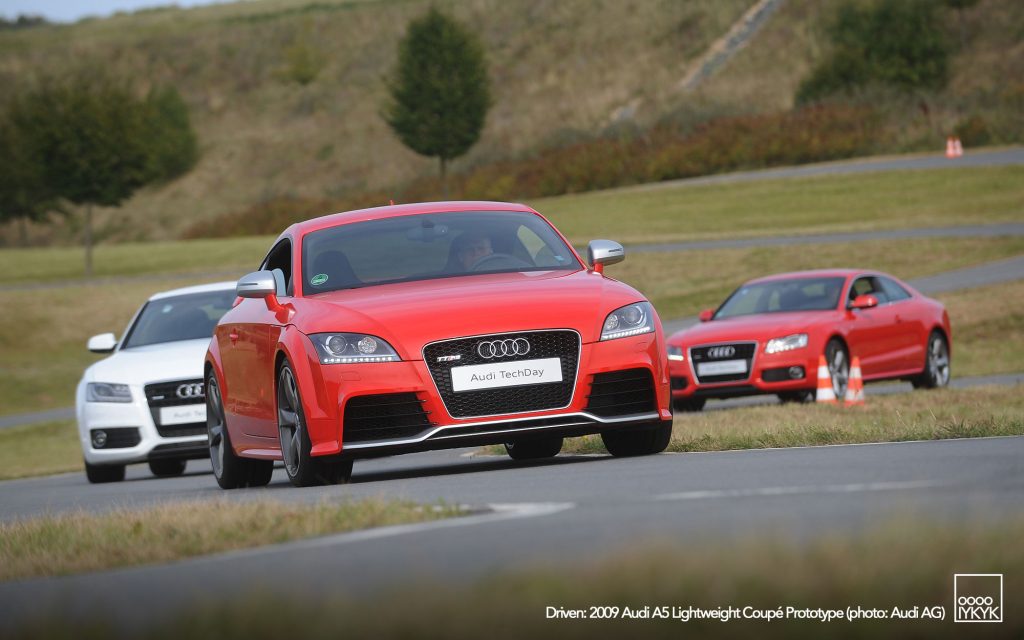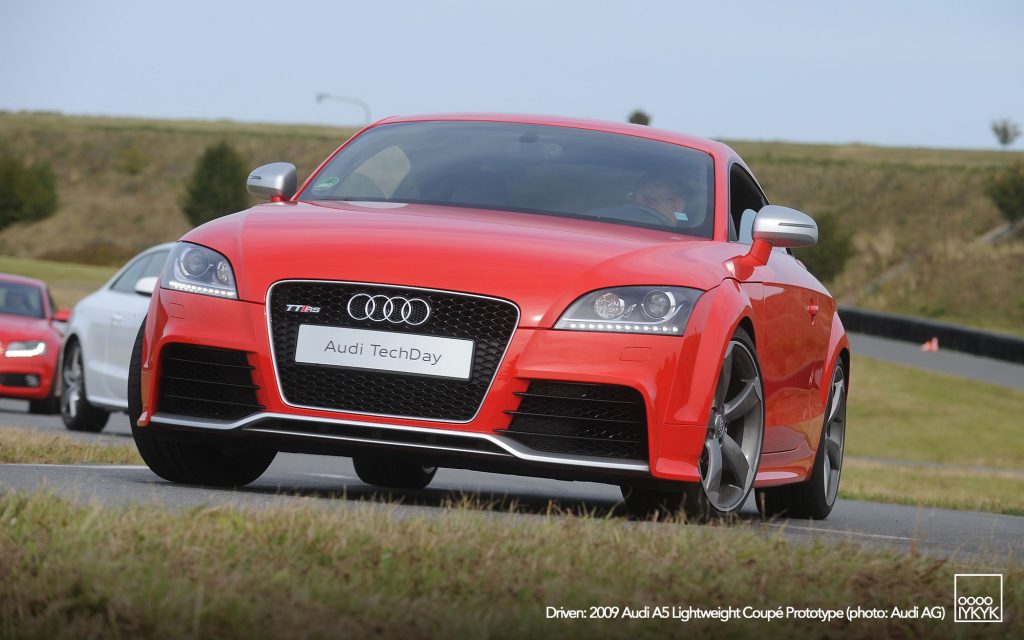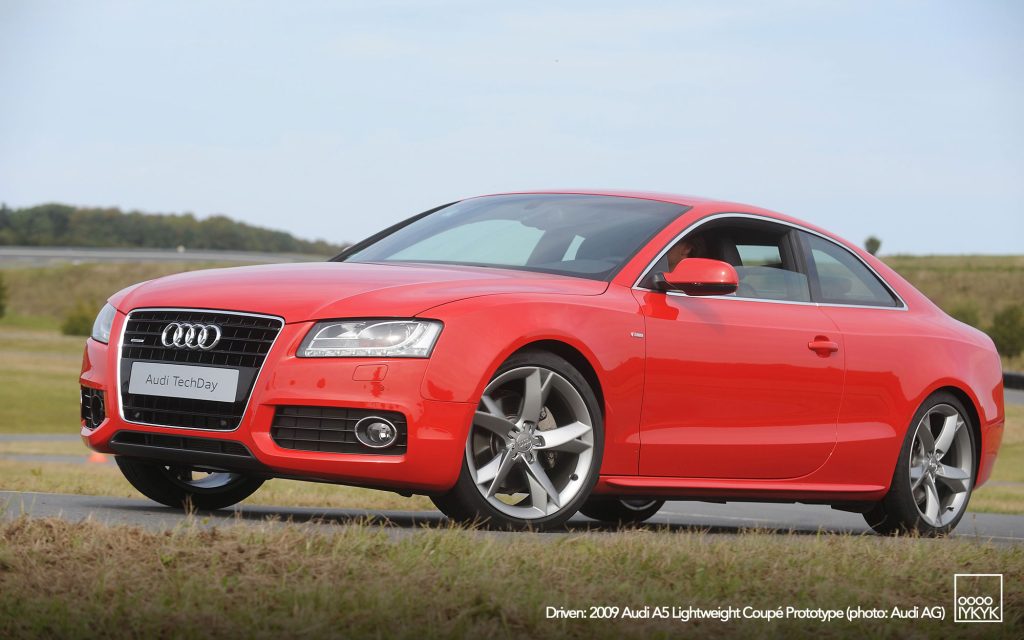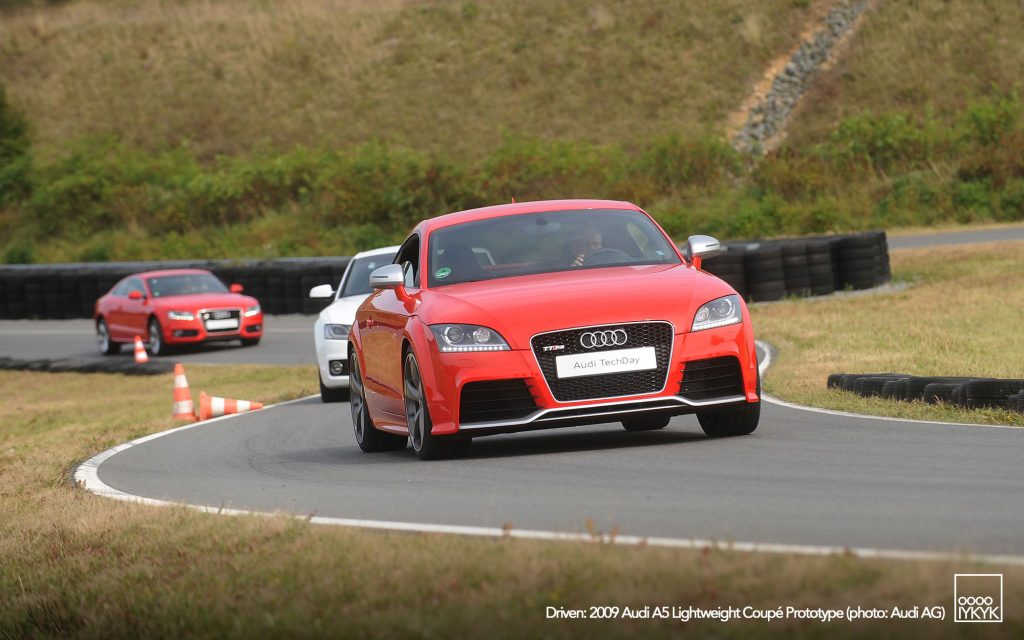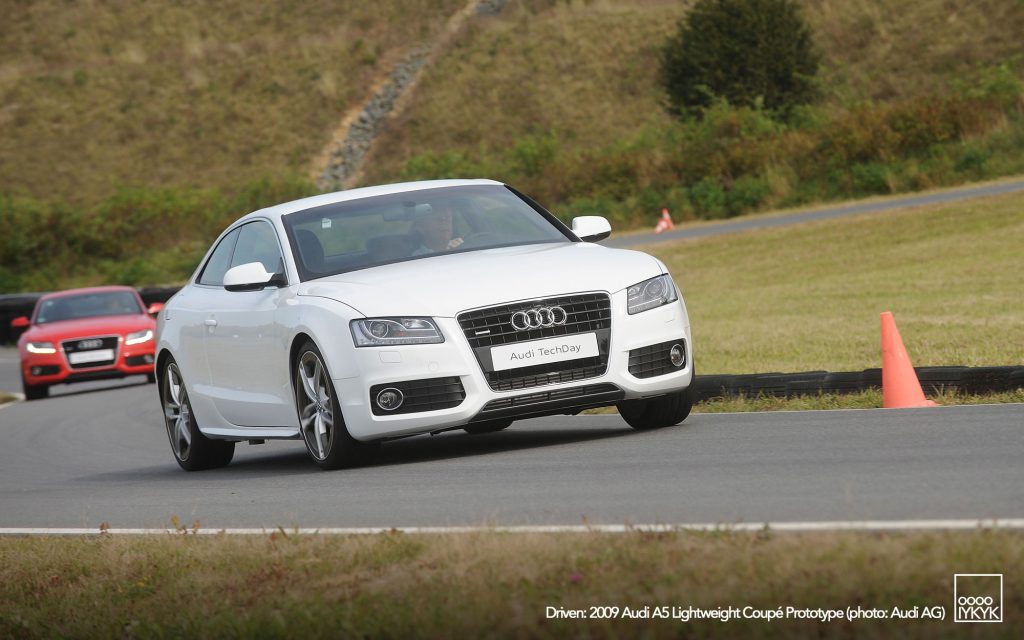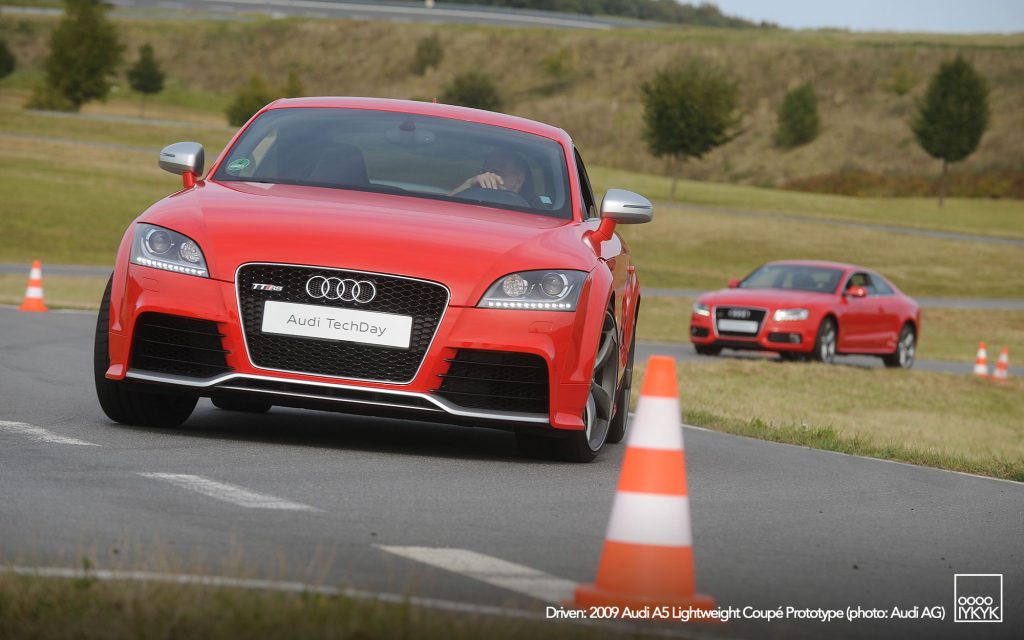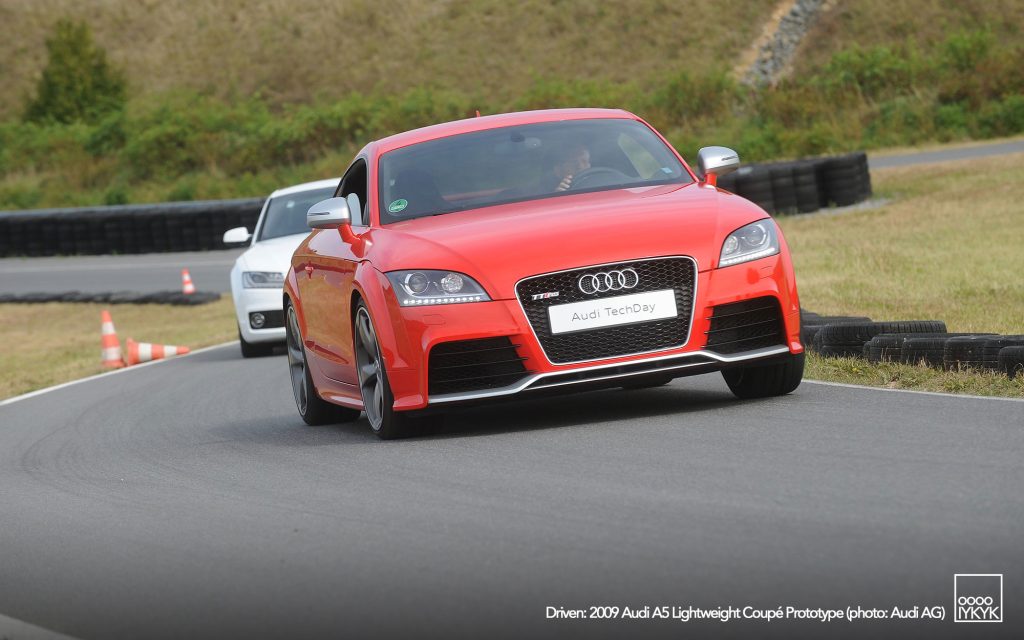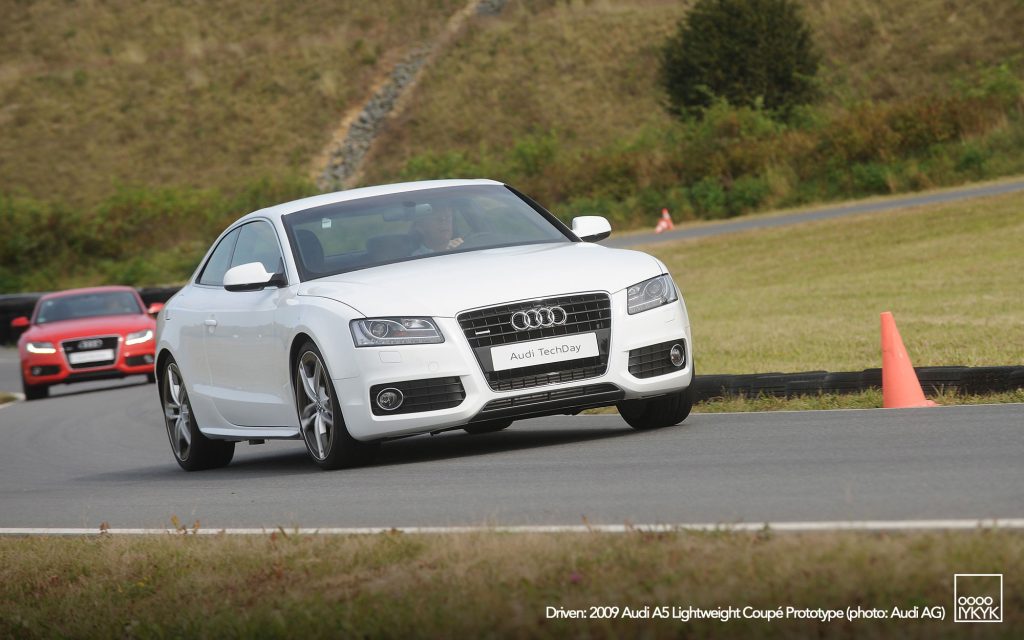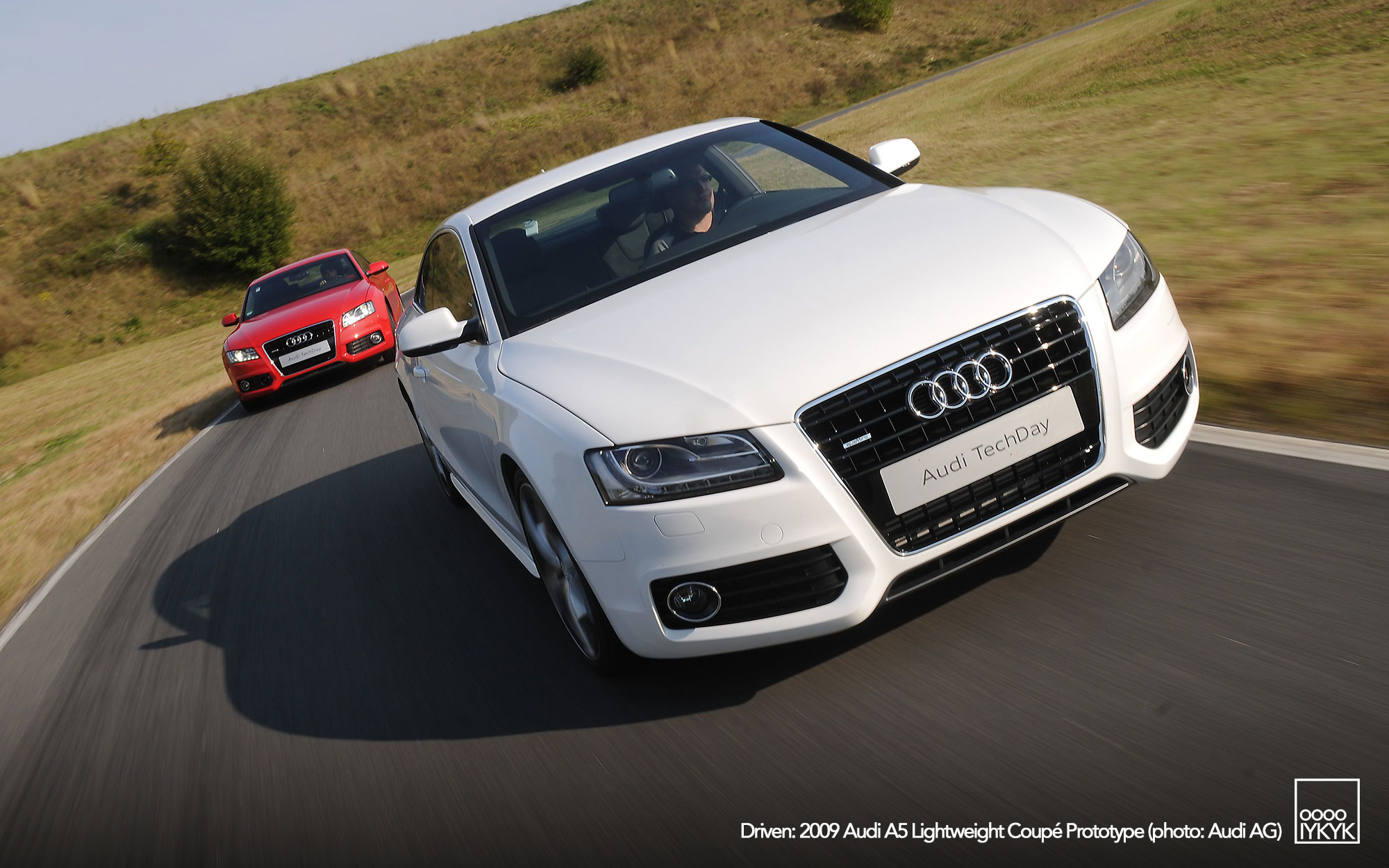Getting inside Bosch’s Boxberg, Germany proving grounds isn’t something that just happens… at least not for car journalsts. Nestled deep in the Baden-Württemberg countryside, the facility is a fortress of asphalt and secrecy—a place where the future of the automobile runs quietly behind locked gates. Test engineers know it simply as Boxberg; everyone else has only heard about it… IF they’ve heard about it at all.
This story marks the first installment of quattro Redux, a series revisiting a somewhat unknown era in Audi’s history—one defined by experimentation, ambition, and a quiet push to reinvent the brand’s performance DNA. In a span of about three years, Audi built a pair of fascinating prototypes and engineering studies that hinted at a new direction—cars that ultimately led to the creation of the much-loved but never-put-into-series-production 2011 quattro concept. In period, I had the opportunity to drive all three of these cars firsthand in that period, each one revealing a different piece of the story. Looking back now, these cars form a narrative of what might have been—a new path for quattro, forged in aluminum, carbon fiber, and pure intent.
In the fall of 2009, Audi had invited a small handful of journalists there for a Tech Day on lightweight construction, it felt like an operation shrouded in clearance levels. Transportation to our test location was managed tightly. Phones were zipped away. Cameras were verboten. Photos here are minimal, as I was never allowed to shoot my own. Press photos could be and were supplied, but they were limited to the basic mix you see here.
Anticipation was high as our corporate Volkswagen Transporter from Ingolstadt provided entry past the gates. The access road wound through a forest until the trees opened into a vast network of test loops, skidpads, and banking. I kept my eyes peeled and every direction seemed to reveal something half-disguised: a camouflaged then next-generation BMW 5 Series mule, a next-generation A8 test chassis in test car livery, even a Land Rover Defender Classic shell atop a clearly high-performance chassis concealing what was rumored to be a Spyker Peking-to-Paris prototype underneath.
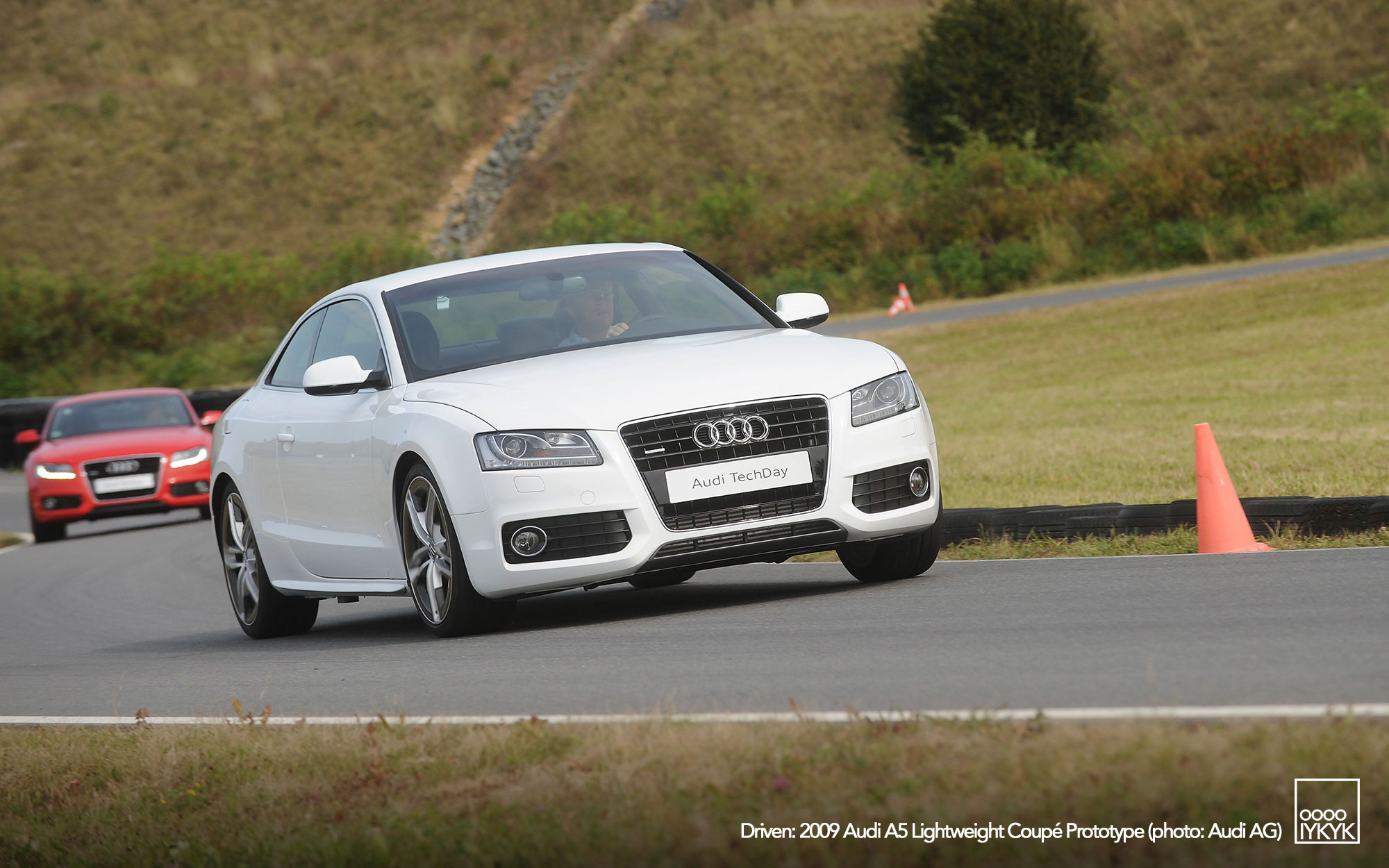
Amid all of this, Audi’s engineers had parked something far more subtle—a white A5 Coupé that, at first glance, appeared almost ordinary. However, under its muted exterior was a secret worth the trip. This was the A5 Lightweight Coupé Prototype, a likely one-off proof of concept built under the direction of Michael Dick, then Audi’s head of technical development. It was the latest evolution of a quiet internal mission: to expand Audi’s Aluminum Space Frame (ASF) technology beyond the flagship A8 and later TT Mk2 and into more accessible, high-volume models like the marque’s top-selling B-segment offerings.
The idea of aluminum construction wasn’t new. Audi had first showcased its ASF technology on the 1991 Avus quattro concept, then proven it in production with the first A8, then expanded upon that with the second-generation TT. By 2009, Dick and his team wanted to take it further—to show that lightness could be the next frontier of performance, not just luxury. To make that case, they built this car, and brought it here, away from the public eye.
Up close, it looked every bit a production A5 S line, save for a few barely noticeable cues: S5-style quad exhausts and carbon-fiber wheel inserts. Beneath the surface, though, we were informed the chassis was pure ASF engineering—aluminum space frame, carbon-fiber-reinforced plastic (CFRP) hood, and countless composite components throughout. Audi’s engineers wouldn’t discuss the specifics. All they would say was that this car represented the next stage in their lightweight development strategy—a study in how to make a performance coupe faster, sharper, and more efficient simply by making it lighter.
The prototype tipped the scales at 2,888 pounds, roughly 500 pounds lighter than a steel-bodied A5 3.2 quattro. Power came from a 2.0-liter turbocharged four-cylinder producing 211 horsepower, paired with a six-speed manual and quattro all-wheel drive. Modest numbers, perhaps, but this wasn’t a horsepower contest—it was a controlled experiment.
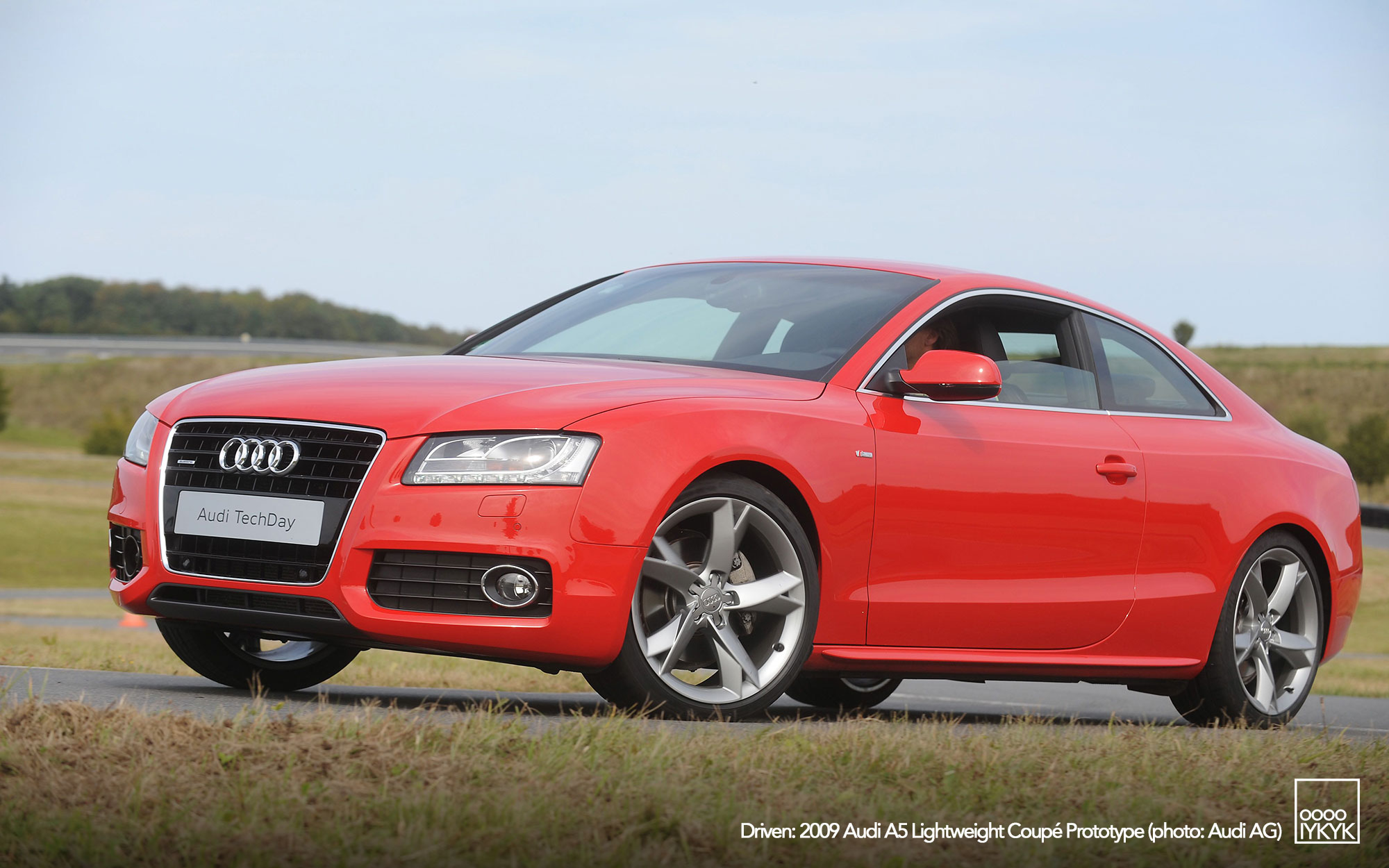
To prove the point, Audi arranged a back-to-back test on Boxberg’s technical loop. The course was short but demanding—sweeping straights, elevation changes, and hairpins sharp enough to reveal a car’s every flaw. The comparison car, a red A5 3.2, was the benchmark for weight and feel. I drove that car first, following an Audi test driver in a TT RS pace car as we learned the layout. The 3.2 was smooth and predictable—fast enough, sure, but heavy in transition.
Then came the switch. Sliding into the lightweight prototype felt unremarkable—same cabin, same seating position, same start button—but once on the move, the difference was immediately obvious. The 2.0T’s torque came on quickly, the steering bit harder, and the chassis felt alive in a way the 3.2 never could. Through Boxberg’s long right-hand sweeper, the car seemed to hover, eager and composed. Over the dips, it settled faster. In the hairpins, it rotated effortlessly. Less inertia meant more freedom—it was that simple.
Audi’s engineers quietly shared a statistic they loved to repeat: every 100 kilograms (220 pounds) of weight saved reduced fuel consumption by roughly 1.3 to 2.1 gallons per 100 miles.
When the test ended, the A5 Lightweight Coupe Prototype was parked back where it began—silent, anonymous, and ready to disappear into the archival obscurity. What could it have become? In the short term, this chassis (or one like it) would be repurposed and I’ll dig into that in the next installment of this quattro Redux series.
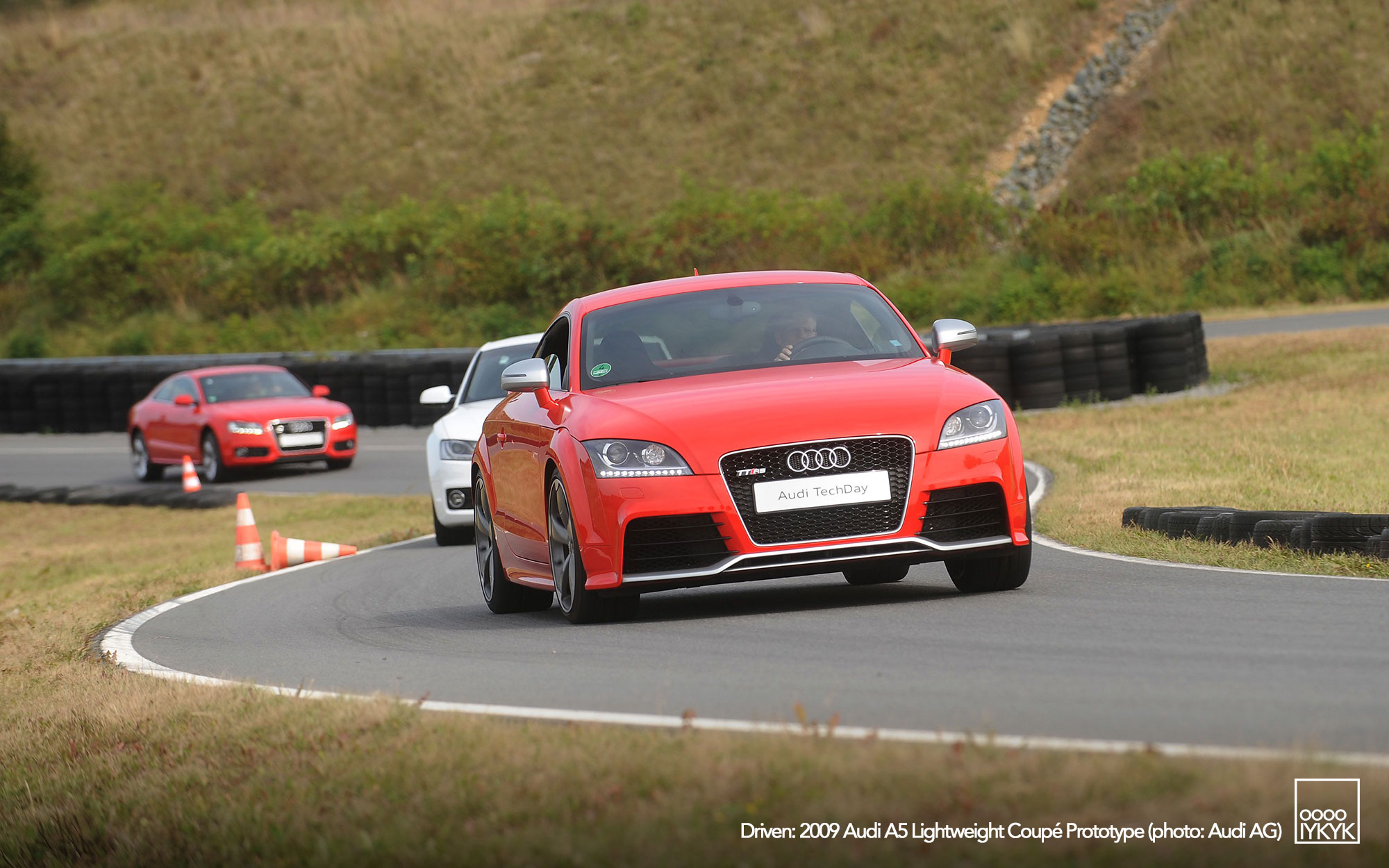
In regards to production, Michael Dick and Audi were likely considering this sort of construction for the B9 era of cars slated for 2016 launch. Could you imagine cars as capable as the RS 5 competition or RS 4 Avant competition some 500 lbs. lighter? The results would have been spectacular.
That never materialized though. In the end, this prototype remained a one-off. The realities of production costs and Audi’s shift toward electrification meant the 2.0T-fitted lightweight A5 experiment would have to evolved if it were to get beyond Boxberg. Yet for those who experienced it, the car was more than a technical exercise. It represented an alternate future where Audi’s engineers focused on “downsizing”.
But for that moment at Boxberg, the future looked different. The car that almost was—a four-cylinder, all-aluminum A5 built for speed through subtraction—proved that Vorsprung durch Technik didn’t have to mean more power or more technology. Sometimes, it simply meant less.
Even now, years later, it feels like one of Audi’s best-kept secrets—a classified chapter from an era when lightness was the next great frontier. It also begs a few questions. What happened to the A5 lightweight Coupé prototype? Were others produced?
I never did hear a number for those constructed, but it would have been incredibly expensive to prototype. In period, I’d been told this chassis or one identical to it had been repurposed for another project, one I’ll get into in the next part of this story.
Next up? quattro Redux, Part 2: The Beast
Read more about the A5 Lightweight Coupé Prototype in the ooooIYKYK Audi Archive, a four rings reference project from ooooIYKYK.
PHOTO GALLERY
